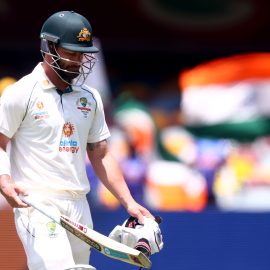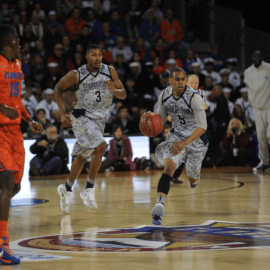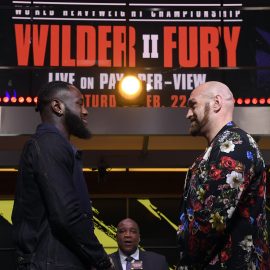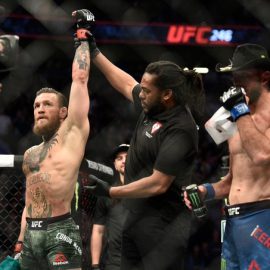Similar to the English Premier League, the NFL and the NBA, eSports players, have contracts, salaries and allowances. Teams have owners, sponsors and board members who meet weekly to ensure their organizations run smoothly.
Against that backdrop, the best eSports organizations make tens of millions of pounds each year in profits. Collectively, the industry crossed the $1 billion mark last year, signalling for an incredible decade ahead. That being said, here are the top ways the industry generates revenues.
Sponsorships
Sponsorships make up 40% of eSports’ annual income, contributing about $400 million of the industry’s $1.1 billion yearly revenue. Coca-Cola, BMW, Mercedes and Toyota are some of the sector’s largest financiers.
Intel, the computer chip maker, is also an important sponsor. The American startup has a $100 million contract with ESL to help steer the industry’s growth. Intel also sponsors a conglomerate of eSports events: Intel Grand Slam, Intel Extreme Masters, and the LPL League, to name a few.
Although sponsors contribute enormous amounts of money to eSports, some critics argue they have too much influence in the industry. As a result, some of them take advantage of leagues and teams, often delaying payment for players.
Others have policies that prohibit eSports professionals from accepting individual sponsorship deals. Of course, it’s not just financiers who are at fault. Many game publishers, leagues and team owners tend to keep all the rights for endorsing products.
Media Rights
Similar to many established sports, eSports acquire a significant portion of its annual revenue from media rights. Research firm new zoo estimates the competitive gaming sector earns over $100 million from broadcasting licenses.
Around 44% of all media organizations that pay to broadcast eSports games are based in the USA. The streaming platform Twitch leads with a $45 million contract to stream all matches from the Overwatch League.
Facebook signed a smaller but significant broadcasting deal with ESL in 2018. The giant social media network has since been broadcasting two of ESL’s biggest eSports event: CS: GO and Dota 2 competitions.
YouTube is another media network that’s regularly signing broadcasting deals left, right and centre. In its latest effort to get a share of the eSports market, YouTube partnered with three streamers who will now stream exclusively on the Google product.
Influential Marketing Deals
Successful eSports players have multiple avenues to make money, influential marketing being one of them. Precisely, they endorse numerous brands to their millions of fans in exchange for pay, some as enormous as $50,000 per post.
Some eSports personalities, like Tyler “Ninja” Blevins, make up to $1 million per year. The Canadian, in particular, get paid incredible sums of cash to endorse a product even if it’s just for one hour. Most players, though, earn a few thousand dollars per post on Twitch or social media.
Some of the best-rated betting sites not only sign huge deals with eSports personalities but also reward customers. These bookmakers, according to Gambla, award each new customer a free bet or equal their first deposit 100%. That way, you can bet on a game without spending your cash.
You can also find more betting options at Zamsino.com. The websites have licenses from the UKGC, provide hundreds of betting markets and offer bonuses too. More importantly, they support eSports and also award you welcome bonuses.
Ticket Sales
Unlike traditional sports like rugby, eSports leagues don’t rely too much on ticket sales. Sure, some have stadiums or hire established stadiums to host events. But ticket sales contribute only a small portion of the industry’s annual gross revenues.
Nonetheless, some leagues regularly make tens of millions by selling out stadiums. A great example is last year’s Fortnite World Cup. Held at New York’s Arthur Ashe stadium, Epic Games charges $50-$150 to around 60,000 people in a three-day event.
The result was a $5 million income, more money than it paid to the event’s winner–$3 million. Apart from Fortnite, Overwatch and ESL also hold some of their events at large stadiums to help accumulate up their revenues.
Tournament Prize Money
Next to broadcast and sponsorship money, eSports players and teams make a lot of money by winning events. Some teams earn up to $20 million each year, but only after competing in dozens of competitions each month.
Luckily, there’s always an eSports tournament each week. As such, teams motivated to win events have plenty of chances weekly or monthly. ESL, for example, holds so many matches that some of the top teams tend to be choosy on which events they play.
Individually, players earn anything between $20,000 and $4 million per year thanks to tournament winnings. In 2019, these were some of the most paid professional gamers:
- Kuro Takhasomi of team liquid, $4.19 million
- Johan Sundstein of Team OG, $3.7 million
- Amer Al-Barkawi of team liquid/team OG–$3.7 million
- Ivan Ivanov of team liquid, $3.5 million
- Lasse Urpalainen of team liquid, $3.5 million
As you can see, team Liquid was the biggest earner last year. The Dutch cum American team has earned over $33 million in tournament profits over the previous five years. The organization plays League of Legends, StarCraft, Dota 2 and Fortnite.
Advertising Revenue
Advertising often goes hand in hand with sponsorships. However, there’s a crop of brands that pay to advertise during eSports broadcasts without making long-term commitments. These companies contribute up to $100 million to the industry each year.
Mercedes, for example, regularly creates adverts during major eSports tournaments in addition to sponsoring some leagues. Similarly, Coca Cola and BMW do both adverts and long-terms sponsorships. Collectively, revenues generated from these brands go a long way in fueling the growth of the industry.
In addition to adverts, eSports organizations also run merchandise websites through which fans can buy gaming paraphernalia or game inspired T-shirts and sneakers.
To Conclude
After hitting a valuation of $1 billion in 2019, eSports is ready to compete at par with traditional sports in fighting for sponsorships and media rights. So far, the industry makes most of its money from sponsors, although teams also generate revenue from adverts, ticket sales and tournament prizes.
Add Sportslens to your Google News Feed!






